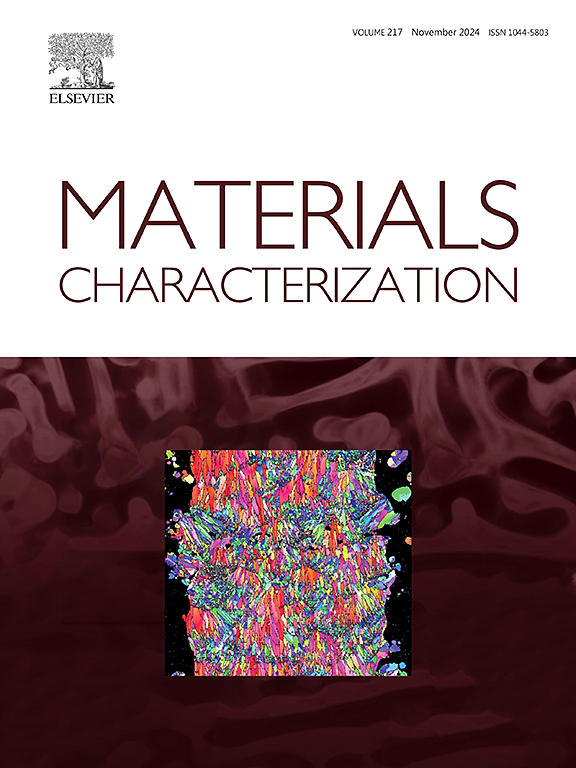Design and characterization of novel multi-phase AlMgZnCuSi light-weight high-entropy alloy with high potential as PCM for energy storage applications
IF 4.8
2区 材料科学
Q1 MATERIALS SCIENCE, CHARACTERIZATION & TESTING
引用次数: 0
Abstract
This paper presents the design, synthesis, and characterization of a lightweight and cost-effective multi-phase eutectic high-entropy alloy, (at.%) with a density of 3.30 g/cm3. The chemical composition of the alloy was meticulously selected to have a mixture of eutectic and intermetallic phases. The alloy is produced by melting followed by a semisolid forging process conducted at 510 °C, employing various holding times to investigate the behavior and phase transformations associated with this alloy. The alloy showed four major phases: FCC (-Al) solid solution, Al2Cu, Mg2Si intermetallic, and FCC Mg-Al-Zn compounds. The semisolid forging process demonstrated remarkable plasticity through reducing the sample thickness by 35% and 70%. The alloy exhibited a high latent heat capacity of phase change, reaching up to 168.9 kJ/kg at around 450, where partial melting of the eutectic phase occurs. This value ranks this alloy among the highest values reported for high-temperature metallic phase change materials. The novel alloy by its nature also boasts partial melting at high temperatures, eliminating the need for costly heat transfer enhancement techniques required by other PCMs. The oxidation kinetics showed an increasing pattern of weight change, adhering to a parabolic rate law. The semisolid forged sample, which was 70% oxidized, displayed the lowest parabolic rate constant of 0.233 × 10−2 g/cm2 after 500 min indicating a low oxidation rate, thus having good oxidation resistance.
新型多相 AlMgZnCuSi 轻质高熵合金的设计与表征,该合金极有可能用作储能应用中的 PCM
本文章由计算机程序翻译,如有差异,请以英文原文为准。
求助全文
约1分钟内获得全文
求助全文
来源期刊

Materials Characterization
工程技术-材料科学:表征与测试
CiteScore
7.60
自引率
8.50%
发文量
746
审稿时长
36 days
期刊介绍:
Materials Characterization features original articles and state-of-the-art reviews on theoretical and practical aspects of the structure and behaviour of materials.
The Journal focuses on all characterization techniques, including all forms of microscopy (light, electron, acoustic, etc.,) and analysis (especially microanalysis and surface analytical techniques). Developments in both this wide range of techniques and their application to the quantification of the microstructure of materials are essential facets of the Journal.
The Journal provides the Materials Scientist/Engineer with up-to-date information on many types of materials with an underlying theme of explaining the behavior of materials using novel approaches. Materials covered by the journal include:
Metals & Alloys
Ceramics
Nanomaterials
Biomedical materials
Optical materials
Composites
Natural Materials.
 求助内容:
求助内容: 应助结果提醒方式:
应助结果提醒方式:


